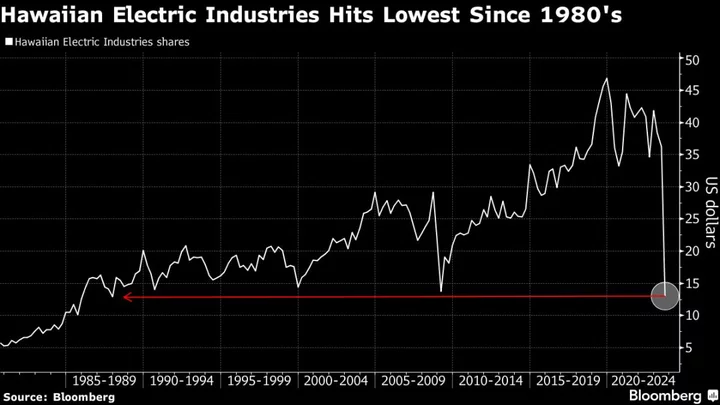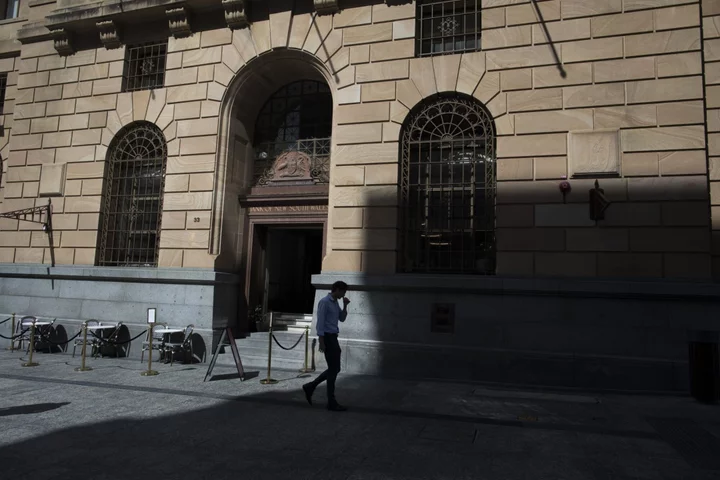Coinbase Global Inc., the largest US cryptocurrency exchange, said its second-quarter loss narrowed and revenue exceeded estimates.
The net loss for the little more than a decade-old-firm narrowed to $97 million, or 42 cents a share, from a record $1.1 billion, or $4.98, a year earlier. It was the sixth consecutive quarterly loss. Even so, the shares have more than doubled this year.
Revenue declined 12% to $707.9 million, higher than the $631.2 million consensus estimate of analysts surveyed by Bloomberg. Quarterly transaction revenue fell to $327.1 million.
Coinbase benefitted from a rebound in crypto prices in the first half of the year while its chief executive, Brian Armstrong, has became deeper embroiled in a fight with US regulators. The Securities and Exchange Commission sued the firm in June for allegedly running an illegal exchange, broker and clearing agency. Chief Legal Officer Paul Grewal said in an earnings call that the company on Friday will file a brief asking the court to dismiss the case.
“Coinbase’s revenue beat versus consensus estimates was due in large part to better-than-expected interest income and staking revenue, which are two areas of the company’s business that appear to be at risk going forward,” said Mark Palmer, an analyst at Berenberg Capital Markets who has a “hold” rating on the company’s stock.
Interest income, a key revenue driver, dropped to $201.4 million from the prior quarter after circulation of the USDC stablecoin declined. Meanwhile, blockchain rewards revenue, primarily from staking, which is under pressure after Coinbase was ordered to stop staking additional assets in four US states, rose.
Shares of Coinbase were little changed at around $90 after initially jumping following the release of the quarterly results.
The company in May launched the Coinbase International Exchange, on which some investors based outside the US can trade crypto derivatives. The venue saw $2.1 billion of trading volume in the past 30 days. Global trading in Bitcoin futures alone totaled $550 billion last month, data compiled by the Block show. Over 50 institutions have been onboarded, and Coinbase plans to add features in the second half of the year, such as additional asset trading books and spot trading, the company said.
Customer fiat balances decreased to $3.8 billion from $5.4 billion at the end of first quarter, primarily due to outflows from a small group of crypto-native institutions, which held higher balances previously “in connection with the banking crisis,” the company said.
Bitcoin accounted for 40% of trading volume in the quarter, up from 31% in the year-ago period, according to Coinbase.
Second-quarter non-trading revenues exceeded trading revenues slightly due to low volatility, Alesia Haas, Coinbase’s chief financial officer, said in a Bloomberg Television interview.
“Volatility has been a key driver of our transaction revenue,” Haas said. “This is the lowest volatility we have seen in many many years.” Still, she pointed out that crypto trading is cyclical, and she expects transaction volumes to come back.
In the current, third quarter, Coinbase expects subscription and services revenue to reach at least $300 million. Coinbase said it generated about $110 million in total transaction revenue in July.
“We remain focused on continuing to optimize our expense base, though we believe the magnitude of future efficiency gains will likely moderate going forward,” the company said in its shareholder letter.
--With assistance from David Pan and Katie Greifeld.
(Updates with Coinbase planning to seek dismissal of SEC suit in the fourth paragraph.)









